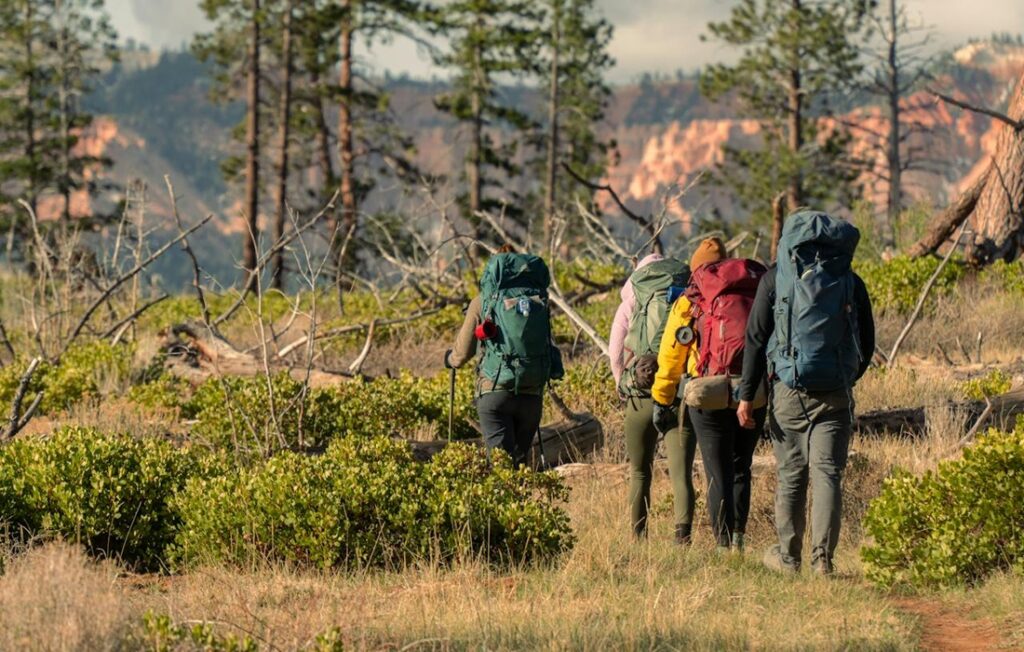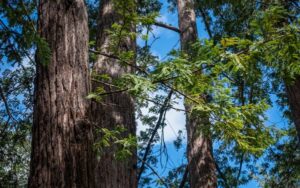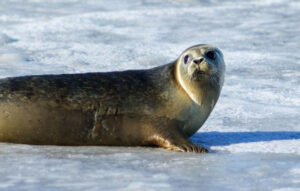The National Park Service is vital for protecting our public lands, managing roughly 85 million acres of federal land in all 50 states, U.S. territories, and the District of Columbia. This includes 433 protected areas such as National Parks, National Monuments, historical battlefields, and military parks. Altogether, our National Parks bring in hundreds of millions of visitors and billions of dollars, contributing significantly to local and state economies across the U.S.
These unique, awe-inspiring natural spaces are a great place to get in touch with nature and explore the outdoors in a variety of fun ways, including hiking, biking, and trail riding. With different opportunities for guests with various experience levels and accessibility needs, the Parks remain some of the greatest natural resources open to the public.
Usually, there are around 20,000 NPS dedicated staff members across the nation. This number includes full-time, seasonal, and temporary positions. Their jobs: to take care of these protected spaces, to keep them clean, to monitor and record wildlife—including endangered species—to educate the public, to guide interactive experiences, and most importantly, to keep visitors safe and step in when emergencies occur.
Unfortunately, as of right now, roughly 13% of National Park Service staff are now gone. This is on top of the 20% decrease in staffing that already occurred before the current administration took office. And yet, 2024 was a record year for visitors to the National Parks. More people are coming to the parks than ever before, but there will now be significantly fewer staff members to support and protect them… the math is not math-ing.
So, why is this happening?
Budget Cuts, and More Cuts, and More Cuts, and More Cuts...
It’s been reported that the Department of Government Efficiency is preparing to cut $26 million in grant funding to the National Park Service (NPS); an act that will likely result in the firing of another 1,500 NPS staff members just before the summer season—the busiest time of year for U.S. National Parks. The United States Department of Interior is currently finalizing its “reduction-in-force” plan, which has already led to the firing of 1,000 NPS staff members in February of this year; a number which does not include the additional 700 staff members who took buyouts after Elon Musk’s notorious “fork in the road” email went out to all federal employees. While a federal judge did order the reinstatement of these 1,000 employees, the Supreme Court later halted this decision.
It’s important to note that these firings had nothing to do with performance, neither did they take into consideration experience, the relevance of the position, or the scientific knowledge loss and human safety risks that would take place in National Parks across the country as a result. Rather, they targeted NPS staff “on probation.” While this may sound reasonable on the surface, this probationary designation is actually quite common and does not refer to any kind of disciplinary measure. Rather, when an existing NPS staff member moves or is promoted to a new position, they are placed on a 12-month probation, regardless of their qualifications, job performance, or level of experience or seniority.
It’s estimated that around 5,000 public lands employees have lost their jobs so far.
The National Parks Conservation Association (NPCA) said it best:
“[National Parks Service staff] maintain trails, clean restrooms, manage wildlife, guide visitors and safeguard America’s cultural and natural treasures. Their loss represents not just a staffing shortage, but also the loss of decades of institutional knowledge and frontline experience. Making matters worse, many roles remain unfilled under a relentless hiring freeze.”
So, what does this mean for the millions of Americans and international tourists who will be visiting the National Parks this summer?
Visiting National Parks This Summer? Here’s What You Need to Know
We’ve touched a little bit on the roles of National Park Service workers, but their impact cannot be overstated. Already this year, 33 hikers had to be rescued from trails surrounding Lake Mead (Arizona) due to the extreme heat with one hiker passing away—that’s just in one week at one park.
With the NPS workforce being stretched so thin, something’s got to give, and it already has. Visitor centers are closing throughout the National Park System and experts predict trail maintenance, campgrounds, and even bathroom cleanliness are going to suffer due to lack of capacity. And this is just the work visitors see first-hand; countless other tasks, including critical research and ranger programs for kids, will also be negatively impacted.
“Despite the dramatic reduction in staff, Interior Secretary Doug Burgum recently issued a demand to park managers to keep trails, campgrounds and visitor centers open — even when they believe it’s unmanageable. This means parks that are already stretched to the limit will be stretched even further.”
NPCA
In other words, profits are being placed above the safety and wellbeing of National Parks Service staff and Park visitors—all 300+ million of them.
However, does this mean you should cancel your trip to the National Parks? Absolutely not. In fact, our parks need visitors now more than ever. By keeping visitation and demand high, we can show legislators and administration staff that the budget for our Parks should be increased, not decreased. Before your trip, make sure you have everything you need to be fully prepared and stay safe.
We’ve put together a list to help you get started!
How to Prepare for Your National Parks Visit
Our National Parks are critical open spaces that need your support, now more than ever. Yes, NPS staff are going to be spread thin, so if you’re planning a trip to the National Parks, make sure you’re adequately prepared.
Here’s how:
- Be prepared for closures and delays. Research current conditions at the park(s) you’re visiting. Many visitor centers, campgrounds, guided tours, self-guided tours, and National Monuments are experiencing reduced hours or cancellations/closures due to lack of staff. You may also experience longer wait times to get into the Parks themselves.
- Bring extra supplies. Make sure you’re fully prepared for the weather and conditions of the Park(s) you are visiting and don’t expect any of the additional services or supplies previously offered at visitor centers. If they’re available, great! But it’s best not to rely on these being provided to you. It’s recommended that you bring extra water along with a reusable water bottle.
- Don’t forget about hygiene! Due to staff shortages, restrooms and trash cans may be closed, blocked off, or infrequently restocked. It’s recommended that you bring your own toilet paper to use as needed as well as a personal hygiene kit. Make sure to bring trash bags and clean up after yourself and others—you can dispose of your garbage once you’re outside of the park. (This also includes any waste created by your four-legged friends!)
- Safety first. Emergencies happen, but given the limited capacity of Park Rangers, make sure you’re always keeping your own safety in mind. That means sticking to the trails, being aware of the number of supplies you have at all times, and being respectful of nature, wildlife, and the weather. (No, that is not a friendly Moose. No, you are not a Moose whisperer. Yes, it will kick your ass.)
- Not a fan of crowds? Consider visiting during weekdays or shoulder seasons (the times between peak and off-season when the Parks are typically less crowded and costs are lower.) Check to see what dates those are for the Parks you’re interested in seeing.
The Future State of the National Parks
So, where do we go from here? We continue to fight for our National Parks, for land conservation, and for equitable access to these magnificent resources and spaces we all love.
Unfortunately, it looks like there are still new battles to come.
Oil & Gas Mining and Selling Public Lands
Donald Trump has made it no secret that he intends to target our National Parks and other federal lands for oil and gas drilling. As of right now, Congress appears to be supporting these efforts. The House Natural Resource Committee majority has proposed millions of cuts to the National Park Service as well as increasing oil and gas leasing and drilling on these lands. It has also proposed additional mining activities near Gates of the Arctic National Park and Preserve and Boundary Waters Canoe Area Wilderness.
Selling public lands for development is also (apparently) on the table now. One proposed piece of legislation in Congress would sell 311 acres of land directly adjacent to Zion National Park, the Zion Scenic Byway, State Road 9, and roads used to enter the Park to developers—something that would permanently alter the park’s scenic views.
It should come as no surprise that these activities would be immensely harmful to the National Parks and the ecosystems and habitats they contain. Not only would these landscapes be placed in immediate jeopardy, but public access to these spaces would also be limited as a result. National Parks were created with conservation and public access in mind, so these drilling and mining efforts—as well as the sale of public lands for private use—are counterintuitive to everything these parks have stood for over the past century.
The Proposed 2026 Federal Budget
Recently, Donald Trump’s administration released their proposed budget for 2026, and it calls for a National Parks Service funding cut to the tune of $1.2 billion, nearly 40% of the agency’s current budget and the largest cut in the 109-year history of the National Parks Service. According to the National Parks Conservation Association, a cut of this magnitude will likely result in around 350 National Parks losing all funding. The administration says that the bulk of this $1.2 billion cut (around $900 million) will come from National Park Service operations, transitioning the management of these sites (and their associated costs) to individual states.
What You Can Do
Whether you’re a frequent National Parks visitor or are hoping to go at least once in your lifetime, these public spaces belong to all of us and should be protected with care, respect, compassion, and expertise.
- Call and email your House and Senate representatives, tag them on social media, go to their offices and make your voice heard. They are YOUR representatives, and their job is to represent YOUR wants and interests. Make sure you let them know what those are.
Tell them that our National Parks are to be protected, and that defunding the National Parks Service is not an option. We need to be putting money behind our critical natural resources and the people who have dedicated their lives to caring for them.
- Share this article and others like it with your community. Spread the word about what exactly is happening to our National Parks and how to get involved.
- Support nonprofits like EarthShare and our Partners, including National Parks Conservation Association, that are prioritizing conservation, clean energy, and a better, healthier future for us all. Stay in the loop on social media, subscribe to newsletters, or make a donation. This also includes volunteering with park organizations!
Here are some we recommend:
- Big Bend Conservancy | Texas*
- Blue Ridge Parkway Foundation | North Carolina*
- Conservancy for Cuyahoga Valley National Park | Ohio
- Golden Gate National Parks Conservancy | California
- National Parks of Lake Superior Foundation | Midwest
- Rock Creek Conservancy | Maryland
* EarthShare state affiliate
- Consider buying an America the Beautiful pass. This $80 annual pass gives you access to more than 2,000 recreation areas (national parks, national wildlife refuges, covers amenity fees at national forests and grasslands, etc.) and 100% of the proceeds go toward improving and enhancing visitor recreation services. You often need a park pass to visit a national park and buying in advance can be helpful due to restricted staffing at the park gates.




